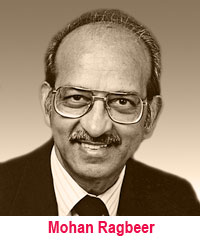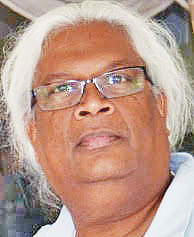Opinions
Babes in the Woods

I have indicated a few of ExxonMobil’s many transgressions, and touched on its official denial of climate change, even though their scientists were confirming it. Now it seems that the Company is changing its mind. The Guyana reserves reported by ExxonMobil and Hess so far come to over 4 billion barrels of oil equivalent, with a potential for developing up to five floating production, storage and off-loading (FPSO) vessels, producing a total of 750,000 barrels per day by 2025. The first three FPSO vessels are Liza Destiny, which will produce
The Government has planned creating a sovereign wealth fund (SWF). The IMF supports this; appropriate legislation is being drafted, if not already done, and hopefully would include an independent overseeing body, headed by the central banker, not a politician, and follow the Santiago Principles (International Forum of SWFs). It would manage oil revenues, e.g. the Norwegian Government Pension Fund Global (an ethical investment fund that has nothing to do with pensions), but modified to save a third of revenue, instead of Norway’s 100%, or Alberta’s Heritage Fund, which started at 30% but veered away to allow foreign and domestic oil interests to seize most of the revenue, and for Alberta to meet budgetary needs. Guyana must avoid this and develop appropriate institutions, and frame sound regulations, keeping the corrupt at bay. The other two-thirds would be scrupulously applied to infrastructure works to develop the activities that would in future carry the nation when oil runs out. The gross revenues by 2025 would exceed the country’s $3 billion gross domestic product, once Exxon’s costs are paid, and provide enough for development.
Meanwhile Guyana must develop the variety of manpower needed in this new industry, and to reduce reliance on imports. It can access technical and degree training in the UWI petroleum Geoscience programme in quantitative petroleum geology and geophysics, which also includes significant basic training in petrophysics and reservoir engineering. UG offers BSc and MSc degrees in petroleum and reservoir engineering.
Lisa 1 alone would pay off Exxon’s $4.4B costs in 3 years from 100,000 boepd, assuming minimum price of $40 per barrel, according to one conservative estimate. Gas recovered would be either reinjected or flared. The only ways available to sell it is by pipeline to a refinery or as LNG. Noting that there are 18 other prospects in the Stabroek block, Maria Cortez, Britain’s Wood Mackenzie’s Latin American senior research manager, said, “Guyana has hit the jackpot. If this small South American nation with a population of about 750,000 can properly manage the billions of dollars of revenue about to come its way, it may become the richest corner of the continent.”
(Corrections: Oct 3 issue, page 6, para 3, “Chico” should read “CLICO”; para 5, “$104.7” should read “104.7 million”.)
Youthfulness and telling the time
 Romeo Kaseram
Romeo Kaseram
My first introduction to telling the time came with the structure that was imposed on Day-One, that start to the countdown that would be the rest of my life – the fateful day when I started attending school as a young boy. Until then, I do not recall seeing a clock in my grandmother’s house, or gazing into its face, and then being taken firmly in hand by its pointing hands so I had to allot an hour to doing arithmetic, and then another for grammar, half-an-hour to learning the two-times multiplication table (up to the fifth row), and then be rewarded with a ten-minute recess break.
What I recall mostly about that time of youthfulness were many, many unchecked and unmonitored days of boyhood growing up in the hot sun back home, without a care whether my shadow grew longer, or shorter, or was absorbed by the black pitch on the roadway at the end of day.
Perhaps there was a clock in the house; there was certainly a mouse or two, but not running up the clock, and then back down when it struck one – it was a run that was more higgledy-piggledy than hickory-dickory, the rodent chased in wide-eyed terror by an army of determined, street-wise, and starving neighbourhood cats always on the lookout for a more substantive meal than the scraps of food they fought among themselves for – and then with the mouse, which they did with a mewling, clawing, the baring of sharp teeth, and a tearing up of mouthfuls of fur, whenever the mouse ran out of time a mere few seconds past one o’clock.
So I exaggerate the passage of time with the untimely passing of the mouse. But looking back, I wondered how Ma told time if she did not have a clock to alarm at 4 am. Yet she was awake to the crowing chorus of the roosters. Some days I wonder if the survivability of a rooster in those back-home days was such that the short life as a chicken was extended with its crowing accuracy in telling time. That our strutting-red rooster, who went on to live to ripened, octogenarian feebleness, the annual loss of a tail feather, growing opaqueness in the eyes, and a wrinkled comb the signs of great age and wisdom, had survived all those years since Ma had grown to depend on him for his punctual reminders of the imminent arrival of the early morning train to take her to the cane fields following a countdown of three, then two, then one frantic, alarming crow.
Clocks came into my life the day I started school. The first was a monstrosity, perched on a tripod of legs so it could not be pushed over, its body round and unassailable as the auntie who pinched my face mercilessly with thumb and forefinger, as if to prove I was also made up with dirt and food stains on the inside, and with a similar glassy unforgiveness, staring down on the innocence of my sleeping form. This antagonistic clock wore as crowns on top of its head two bells with a small, stationary hammer at the centre. These bells sounded accurately at 5:30 am, the hammer pounding in a whirr of motion, dragging me away from the warmth of sleep and my dreams of being back in Ma’s house where time always stayed motionless.
Then it was on to school, racing against the climbing warmth of the sun, against the ringing of the bell, an accomplice to the criminality of the clock, insistently calling us away from many a foregathering: inspecting with a jabs from a stick the white underbelly of an unwilling, helpless frog; or poking with the same stick at an ant’s nest in anticipation of its annoyed denizens repairing the damage for even more prodding the next day; or floating leaves down the flow of a main drain so each leaf grew into a tall ship spinning away in the current, carrying away our dreams of sailing far, far away from the rising annoyance in the voices of teachers fanning themselves with copybooks while calling us to the misery of assembly.
We were taught to tell time using a circle cut from cardboard, the simulation of a clock marked at intervals on the edge; two hands, cut from the same cardboard, rotated on a bent pin. So we were tested, the teacher arbitrarily moving the hands, calling to each of us to accurately recite the coordinates of long hand, short hand. These were the responses: “The long hand is on 12; the short hand is on five. The time is five o’clock.” So the hours passed that marked our childhood, where young lives became structured into the intervals of minutes, hours, days, weeks, and years.
Decades later, I look back to the moment when it all changed for me, noting not only the loss, but more – a disconnecting from, perhaps a tearing away of the timelessness that inscribes the truest form of boyhood, and its replacement with the ticking away and the unforgiving face of a clock.
